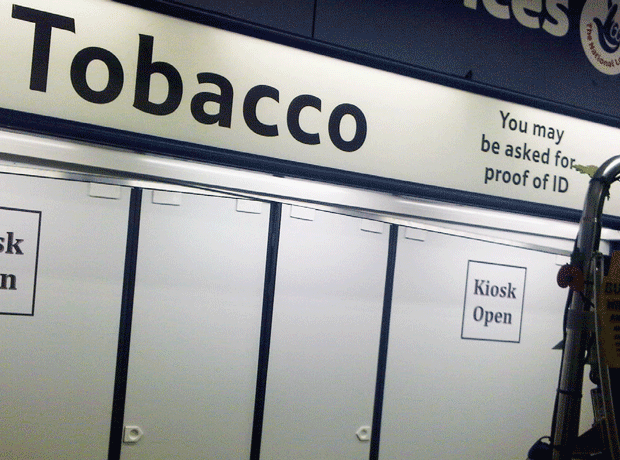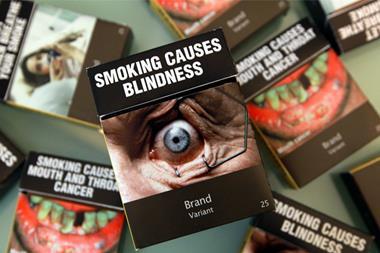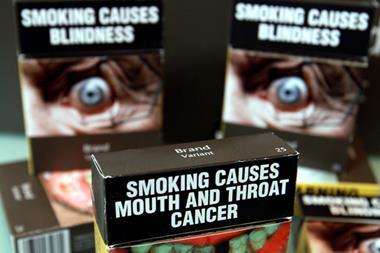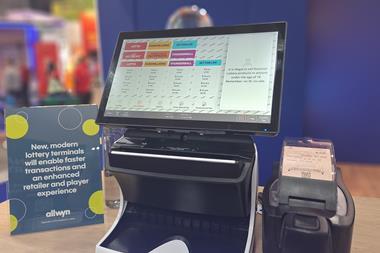
The government’s decision today to open a new review into plain packaging for tobacco has been met with dismay by retail groups, amid claims it will put added burdens on small retailers.
The example of Australia, which enacted plain packaging a year ago, showed that retailers would incur greater costs, said ACS boss James Lowman. “We have seen that in Australia, while the number of cigarettes sold has remained the same, customers have switched to cheaper brands, thus reducing retailer margins and reducing the average price paid for tobacco, without reducing consumption.”
“We have seen that in Australia, while the number of cigarettes sold has remained the same, customers have switched to cheaper brands, thus reducing retailer margins”
James Lowman, ACS
Lowman added that the proposal to introduce plain packs in 2015 would coincide with the start of the tobacco display ban for small shops: “Introducing both these measures in the same year would be a huge burden on retailers.”
Andrew Opie, director of food and sustainability at the BRC, said it was disappointing the government had not taken a more “coherent approach” to its strategy when it developed the tobacco display ban.
“When that policy was being developed we made the point to government that plain packaging would be a more comprehensive approach and would avoid the need for a display ban,” he said. “Now, only 18 months after retailers spent tens of millions of pounds meeting the display ban, we have a proposal that makes that spending unnecessary.”
The National Federation of Retail Newsagents (NFRN) said it was “disappointed” by the move. “It has always been our belief that putting tobacco into plain packaging would take trade away from legitimate retailers and place it in the hands of smugglers and counterfeiters who have no compunction as to who they sell to,” said NFRN national president Colin Fletcher.
Wholesaler expense
Unbranded packs would add “expense, delay and confusion” to the distribution chain, and complicate the work of wholesalers, said the Federation of Wholesale Distributors (FWD). “Clear branding of products is absolutely vital in a large-scale distribution operation, and tobacco traders need to be able to select the products their customers demand,” said FWD chief executive James Bielby.
The FWD pointed out that existing display rules meant that tobacco products in cash & carry outlets had to be sold from a separate room that was open to tobacco traders only. “Outer packaging cannot influence purchase as consumers do not see it. Therefore we are asking the government not to impose an operational burden on our members which will not help achieve the goals of the proposed legislation,” said Bielby.
Move welcomed
However, the plans were welcomed by health groups. “If this becomes law next year, there is no question that it will save thousands of lives in the future,” said Cancer Research UK chief executive Harpal Kumar, adding that the move showed “great leadership”.
Read this
E-cigarettes: everything you ever wanted to know
Sales of e-cigs are projected to hit £338m by 2015, but the threat of regulation hangs over this fledgling industry…
“Tobacco is a unique product. It is the only consumable that, when used in the way the manufacturer intends, kills half of its users,” he said.
“Allowing marketing practices that promote this is simply wrong – especially when the result is millions of children being lured in to an addiction that results in death and chronic health problems.”
The government review represented “an important step towards informed, evidence-based policy”, said the British Brands Group. However, it added: “The assessment of branding and its effect on consumer behaviour and how markets work has so far been simplistic in policy analysis. Reliable, hard evidence is needed to gauge whether plain packaging will really discourage young people from smoking.”
The government review will be led by paediatrician Sir Cyril Chantler. Public health minister Jane Ellison said today the inquiry would focus in particular on the impact plain packs might make on children.
“We know that two thirds of smokers start as children so we must continue to do all we can to encourage everyone to quit and in the case of children, not to start in the first place,” she said.




















No comments yet